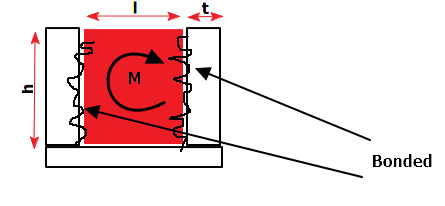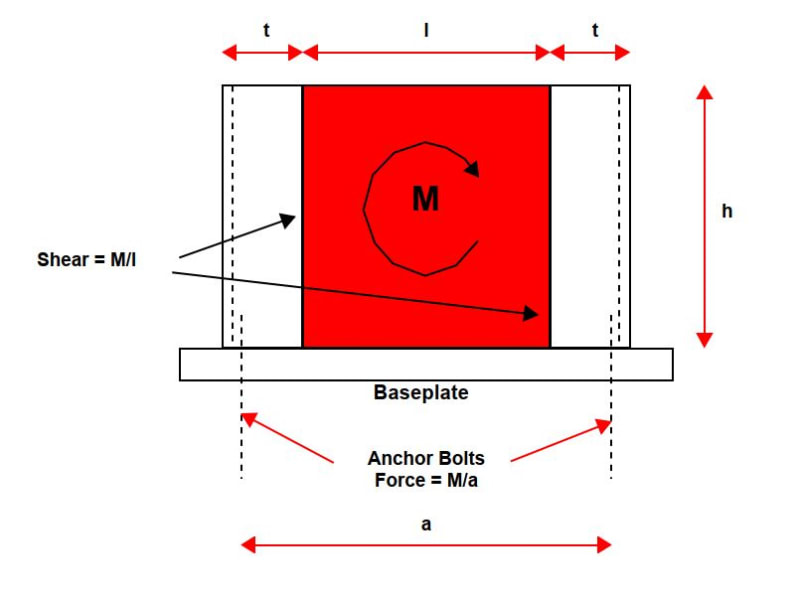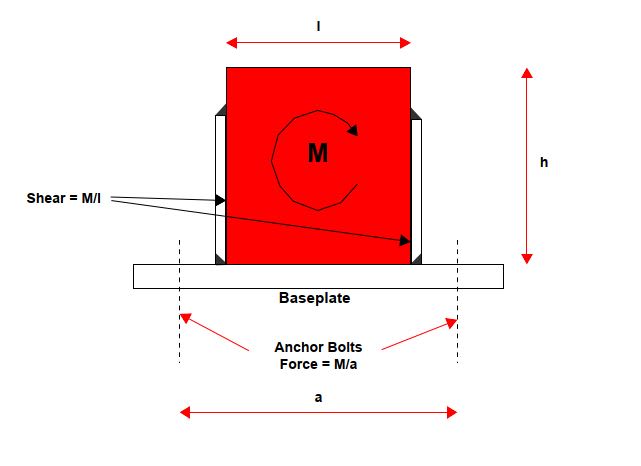Hello, a problem I'll try to conceptualize best I can:
Let's say I have a rigid solid square section that is bonded on both sides of the flanges at both ends by a c-channel of length width W, flange thickness t, gap (and square dim) l and flange height h (see below illustration).
A moment M is applied to the square tube and equal stress is developed in both c-channel flanges. What is the proper way to evaluate the stress in these flanges.

[ol 1]
[li]Evaluate each flange separately (4 total) and assume only 1/4M goes thru each c-channel flange, however the section modulus is based on the individual flange (poor).[/li]
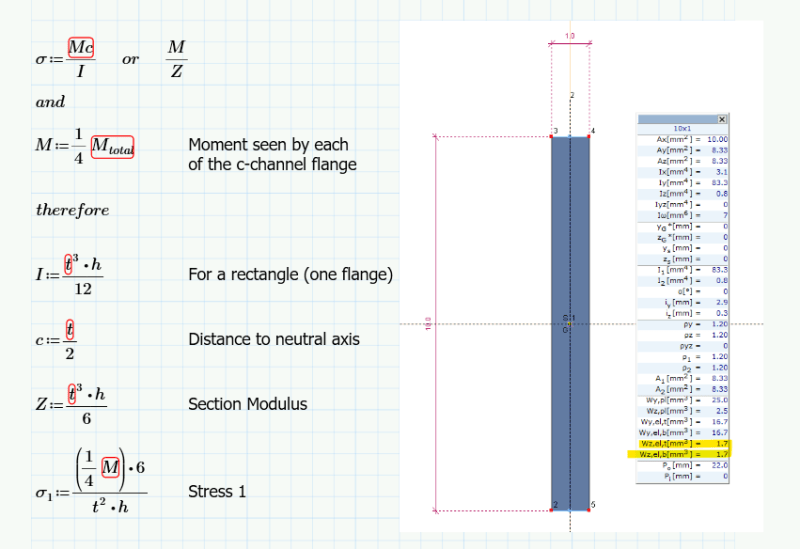
[li]Evaluate each c-channel as a whole. Assuming just the flanges take the load and not the base (conservative) the moment will be 1/2M for each, however the section modulus will be much higher. This will obvs depend on the separating distance l (example below uses 10), if evaluating it this way the 2x moment will be dwarfed by the additional area being further away from the centroid fairly quickly.[/li]
[/ol]
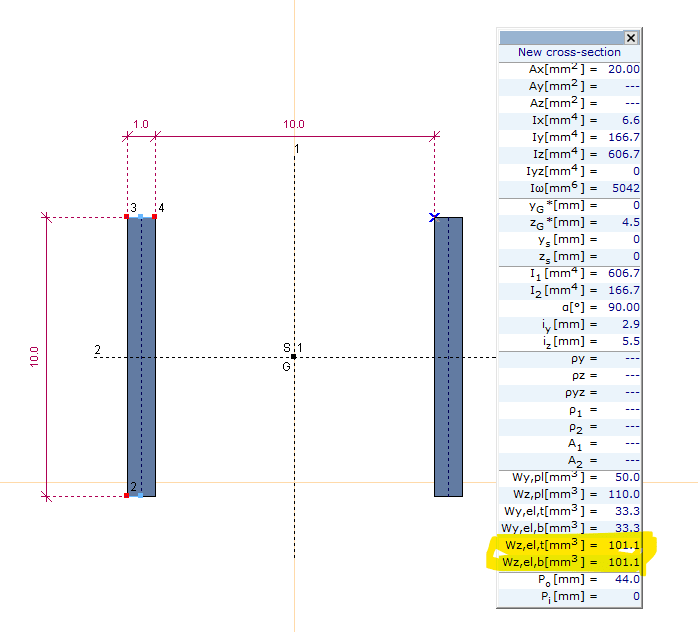
What's the correct way to evaluate the bending stress in the c-channels, or have I totally missed the mark?
“If the women don't find you handsome, they should at least find you handy.” - Red Green
Let's say I have a rigid solid square section that is bonded on both sides of the flanges at both ends by a c-channel of length width W, flange thickness t, gap (and square dim) l and flange height h (see below illustration).
A moment M is applied to the square tube and equal stress is developed in both c-channel flanges. What is the proper way to evaluate the stress in these flanges.

[ol 1]
[li]Evaluate each flange separately (4 total) and assume only 1/4M goes thru each c-channel flange, however the section modulus is based on the individual flange (poor).[/li]

[li]Evaluate each c-channel as a whole. Assuming just the flanges take the load and not the base (conservative) the moment will be 1/2M for each, however the section modulus will be much higher. This will obvs depend on the separating distance l (example below uses 10), if evaluating it this way the 2x moment will be dwarfed by the additional area being further away from the centroid fairly quickly.[/li]
[/ol]

What's the correct way to evaluate the bending stress in the c-channels, or have I totally missed the mark?
“If the women don't find you handsome, they should at least find you handy.” - Red Green

